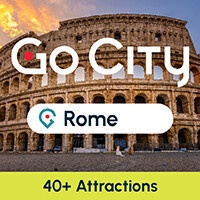Are you ready to discover the meaning of the roman monuments name?

Dear Insideaters, today we take you around Rome to discover the meaning of the names of some of its famous monuments. We are used to wandering around the cities looking for historical attractions to take pictures of and magical glimpses to discover, but once we find them no one wonders about their names… today we will take care of it!
How could we not start with the emblematic monument of the city of Rome, the Colosseum? The Colosseum, originally the Flavian amphitheater, took its name in the Middle Ages. The name comes from the deformation of the Latin adjective “colosseum”, colossal. The adjective has been linked to this attraction due to its imposing size and its proximity, in the past, to the colossal acrolithic statue of Nero, located nearby.
Closely, between the Circo Massimo and the banks of the Tevere, you can find the Bocca della Verità, which means mouth of truth, a marble mask located in the church of Santa Maria in Cosmedin. It represents a bearded male face, perhaps that of the god Neptune.
It is thought that it was built by Virgilio Marone Grammatico, a learned man who practiced magic. Its use, hence the name, was mainly intended for husbands and wives who had doubted the fidelity of the spouse. To find out the truth, in fact, he had the hand of the suspect spouse inserted into his mouth and, in the event that a betrayal had occurred, the hand of the guilty would be bitten.

Fontana di Trevi, one of the most famous Roman monuments. The name derives from the place in which it is located called “dello Trejo”, in reference to the “Trivio”, which indicates a three-way intersection. From the term “Trejo”, in a short time, it passed to Trevi.
Piazza di Spagna was built with the idea of connecting the Spanish embassy and the church of Trinità dei Monti. Precisely for this function and for the presence of the head quarters of the Iberian embassy it was given this name.
Another wonderful square in Rome that has something to tell through its name is Piazza del Popolo. There are in fact two possible etymologies of the name, both valid and none falsified over time. The first derives from the Latin word “populus”, poplar tree, because the tomb of Nero was located nearby, protected by a grove of these trees. The second meaning is connected to Pope Paschal II who had a chapel built at the people’s expense. The chapel was where the current church of Santa Maria del Popolo was later built.
Now, looking at the Roman monuments, you can no longer ask yourself what the meaning of their names is, because we revealed it to you!
If you want to discover other important roman monuments, read the article The roman obelisks.
Dear Insideaters, we hope to have satisfied once more your curiosity about roman monuments.
Keep following us and reading our articles on history, art, culture and food and wine here.










